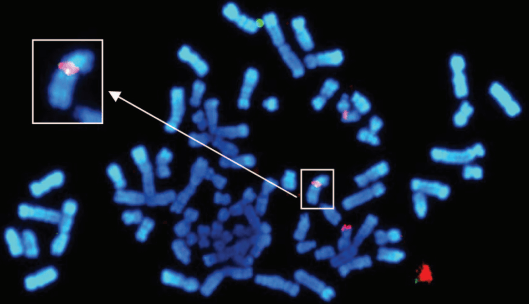Creative Bioarray provides a comprehensive FISH analysis solution for the evaluation of quasi-gene vectors in gene therapy. Morphology-based AAV vector distribution and transgenic mRNA expression analysis in animal model tissues can help customers better acquire relevant knowledge and evaluate treatment effects. At the same time, our combined service can provide customers with multiple visual analyses of DNA/RNA and RNA/protein.
Characterization of Adeno-associated Virus Vectors in Cell Therapy
Recombinant adeno-associated virus (rAAV) has become the preferred gene delivery vector for many clinical and research applications. This is because they have a wide range of virus tropism, the ability to transduce dividing and non-dividing cells, low immunogenicity, and stability and durability as free DNA, ensuring long-term transgene expression. Many engineered variants of rAAV have been accelerated to meet the demand for gene therapy vectors with specific cell types and tissue tropism. The technique of locating vector transgenes in cells and tissues is essential to fully characterize the results of gene therapy. Carrier safety considerations in pre-clinical in vivo animal studies mainly focus on carrier biodistribution, cell-specific uptake, and transgene expression. In situ hybridization (ISH) uses synthetic complementary RNA or DNA nucleotide probes to locate and detect sequences of interest in fixed cells, tissue sections, or entire tissue scaffolds. The FISH analysis uses fluorophore-labeled probes to display multiple targets at the same time.
 Fig 1. Fluorescence in situ hybridization of metaphase chromosomes from a selected clone. (Zhang C, et al. 2007)
Fig 1. Fluorescence in situ hybridization of metaphase chromosomes from a selected clone. (Zhang C, et al. 2007)
Visualization Scheme for AAV Evaluation
Methods of locating DNA or mRNA in fixed cells, histological tissue slices, and even entire installed cytological preparations are invaluable for assessing the distribution of transduced cells after gene delivery. We perform ISH analysis services for RNA/DNA in cytology specimens, which can be widely used in laboratories to evaluate various treatment methods, including viral vector-mediated gene therapy, whole cell delivery, and in vitro gene therapy. Our service can achieve single-cell resolution AAV vector DNA quantitative assessment, treatment-optimized transgenic RNA detection, vector and transgene expression positive cell percentage visualization, etc.
This service is based on selectable commercial probes or customized probes for targeted analysis. For some special cell types such as neurons, astrocytes, and glial cells, we provide multiple analyses of cell-specific AAV and transgenic mRNA based on cell-labeled probes. In addition, it can also be used with the immunolabeling method to analyze and detect AAV-mediated gene expression from the protein level. Multi-level in situ analysis has a more open perspective. Nevertheless, a single protein level analysis cannot assess the expression of the vector. ISH is particularly important when AAV is used to deliver secreted or axon-transported proteins. Because in this case, the presence of intracellular protein does not indicate that it is transduced by the AAV vector, protein immunolabeling cannot be used to check cell transduction.
 Fig 2. The main points of AAV carrier in-situ analysis service.
Fig 2. The main points of AAV carrier in-situ analysis service.
If you are interested in our FISH service, please contact us for cooperation. We look forward to cooperating with you in the near future.
Reference
- Zhang C, Cortez N G, Berns K I. Characterization of a bipartite recombinant adeno-associated viral vector for site-specific integration[J]. Human gene therapy, 2007, 18(9): 787-797.


 Fig 1. Fluorescence in situ hybridization of metaphase chromosomes from a selected clone. (Zhang C, et al. 2007)
Fig 1. Fluorescence in situ hybridization of metaphase chromosomes from a selected clone. (Zhang C, et al. 2007) Fig 2. The main points of AAV carrier in-situ analysis service.
Fig 2. The main points of AAV carrier in-situ analysis service.


